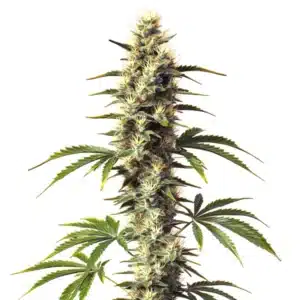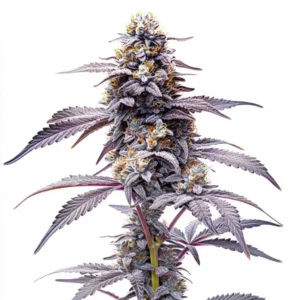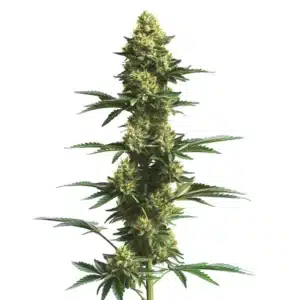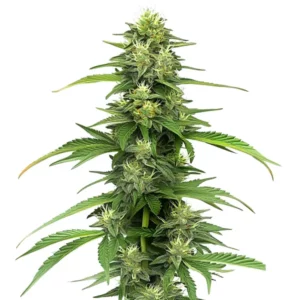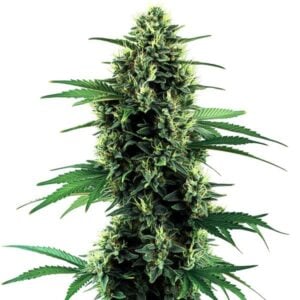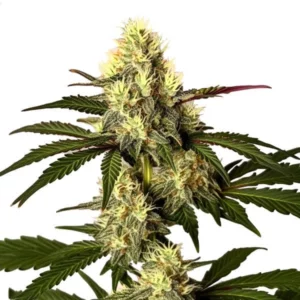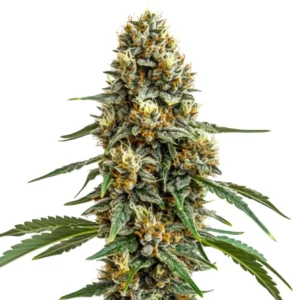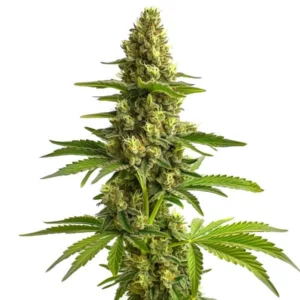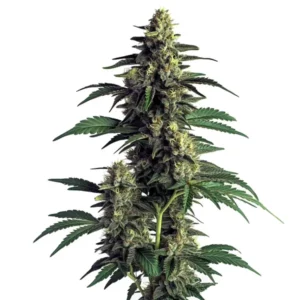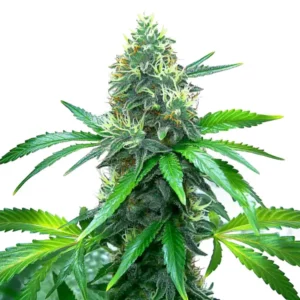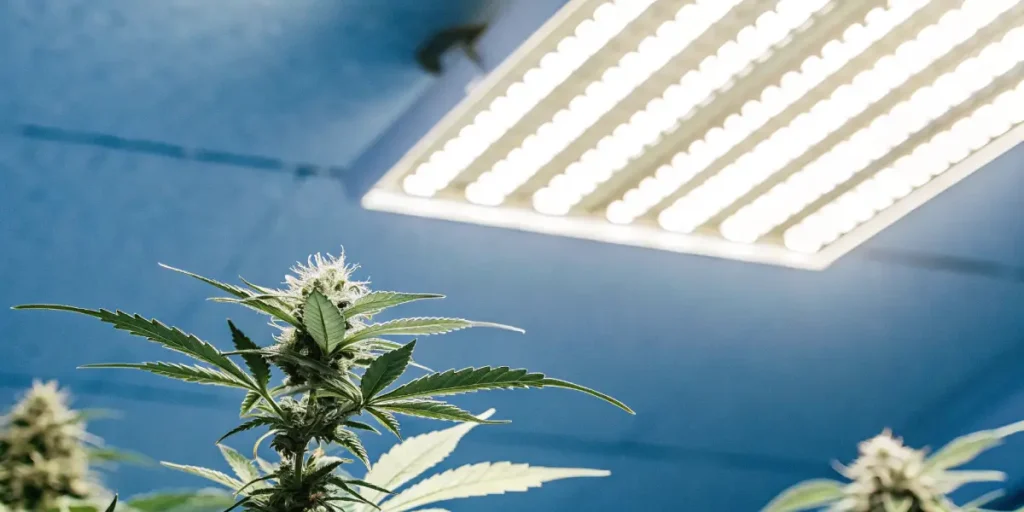
Environmental Stress and Hormone Regulation in Cannabis
Cannabis plants are incredibly resilient, yet the environment can put them through the wringer. From heatwaves to droughts, these plants face numerous challenges. Knowing how environmental stress and hormone regulation in cannabis interact helps both novice and experienced growers optimize their yields.
Hormones are the plant’s internal messaging system. They tell the plant how to grow, when to flower, and how to respond to threats. When a cannabis plant experiences stress, it triggers changes in hormone levels to adapt and survive. This complex process is known as cannabis hormone regulation under environmental stress.
Recommended Strains
CBD Supreme Durban
-
CBD: 6% - 8%
-
THC: 6% - 8%
-
Type of seed: CBD Feminized
-
Phenotype: 75% Sativa / 25% Indica
-
Flavor: Spicy, Sweet
-
Day to flower: 8 - 10 weeks
Animal Mints
-
THC: 22% - 24%
-
Type of seed: Feminized
-
Phenotype: 40% Sativa / 60% Indica
-
Flavor: Herbal, Mint
-
Day to flower: 10 - 12 weeks
Let’s dive into how stress impacts cannabis. Stress adaptation is key to thriving under less-than-ideal conditions. Growers can manipulate these factors to ensure healthier plants. For instance, choosing the right cannabis strain can make a significant difference. Consider strains like Gorilla Glue 4, known for its resilience, or the high-yielding Bruce Banner, both available at Blimburn Seeds.
Environmental Stress Effects on Cannabis Hormone Regulation
Environmental stress comes in many forms. Temperature fluctuations, water scarcity, and pests all play a part. Each factor influences the plant’s hormonal balance differently. For instance, heat stress often results in the production of abscisic acid, a hormone that helps the plant conserve water.
When faced with water stress, cannabis plants increase the production of hormones like abscisic acid and jasmonic acid. These hormones signal the plant to close its stomata tiny openings on leaves to reduce water loss. This adaptation highlights the connection between environmental factors influencing cannabis hormonal response.
Moreover, stress from environmental factors such as poor soil quality or nutrient deficiency can significantly alter hormone levels. For example, a lack of essential nutrients like nitrogen or potassium can lead to an imbalance in gibberellins and cytokinins, slowing growth and affecting overall plant health.
Environmental stress effects on cannabis hormone regulation are complex and multifaceted. By knowing these effects, growers can tailor their cultivation practices to mitigate negative impacts, ensuring that plants remain robust and productive even under challenging conditions.
Promos & Deals
Cannabis Hormone Regulation Under Environmental Stress
Hormones like gibberellins, auxins, and cytokinins are crucial in regular growth phases. However, under stress, their roles shift dramatically. In stressed conditions, gibberellin levels decrease, slowing growth. This shift allows the plant to conserve energy and resources.
Auxins, which usually promote cell elongation, may also decrease. This reduction helps the plant concentrate on survival rather than growth. Meanwhile, cytokinins, which encourage cell division, can be redirected towards root development, aiding in better water absorption.
Additionally, the interplay between hormones such as ethylene and salicylic acid illustrates how cannabis hormone regulation under environmental stress is a dynamic process. Ethylene’s increase can signal the plant to prioritize survival mechanisms, while salicylic acid helps in pathogen defense.
Knowing the nuances of cannabis hormone regulation under environmental stress enables growers to make informed decisions about strain selection and environmental management. This knowledge is essential for optimizing both yield and quality in cannabis cultivation.

Impact of Stress on Cannabis Hormone Levels
Stress impacts hormone levels in various ways. For instance, when cannabis plants encounter pest attacks, they produce more salicylic acid. This hormone strengthens the plant’s defense mechanisms. It’s like an immune response to ward off the invaders.
Moreover, ethylene levels generally rise under stress. Ethylene is a hormone associated with aging and leaf drop. However, in stressful conditions, it signals the plant to focus on survival and reproduction. This hormone is crucial in the stress adaptation and hormone changes that occur in cannabis.
The impact of stress on cannabis hormone levels is also seen in how the plant allocates resources during adverse conditions. Hormones that typically promote growth may be suppressed in favor of those that enhance survival, such as abscisic acid during drought conditions.
This reallocation of resources and hormonal shifts can affect the plant’s secondary metabolism, influencing the production of cannabinoids and terpenes. Recognizing these changes helps growers adjust their practices to maintain desired plant traits and potency.
Practical Tips for Managing Environmental Stress in Cannabis
Managing stress in your cannabis garden involves knowing and adapting to your plants’ needs. Start with choosing the right strain. Some strains handle stress better than others. For example, the Black Domina from Blimburn Seeds is famed for its toughness and adaptability.
Additionally, maintaining optimal growing conditions is key. Ensure proper watering schedules, adequate light, and pest management practices. These small changes can significantly impact stress levels and overall plant health.
Another practical approach is to monitor and adjust nutrient levels regularly. Ensuring that your plants receive the right balance of nutrients can prevent stress and promote healthier growth. Implementing a robust pest management plan is also crucial in preventing stress from infestations.
Consider using stress-reducing techniques such as controlled stress exposure, which can enhance resilience. This involves gradually introducing small amounts of stress to strengthen the plant’s adaptive mechanisms, ultimately improving environmental stress and hormone regulation in cannabis.
Environmental Factors Influencing Cannabis Hormonal Response
Light, temperature, and humidity are major environmental factors. Too much or too little light affects photosynthesis and hormone production. Therefore, it’s crucial to find a balance. Adjust lighting as needed to mimic natural conditions.
Temperature extremes can also disrupt hormone regulation. Use fans or heaters to maintain a stable environment. High humidity can encourage mold, another stress factor. Dehumidifiers can help keep levels in check.
Soil quality and composition are also critical environmental factors influencing cannabis hormonal response. Poor soil can lead to nutrient deficiencies, which in turn affect hormone production and plant health. Regular soil testing and amendment can mitigate these issues.
Furthermore, the timing and method of watering can influence hormonal responses. Over-watering or under-watering can trigger stress responses, altering hormone levels. Implementing a consistent watering schedule can help maintain hormonal balance and plant health.
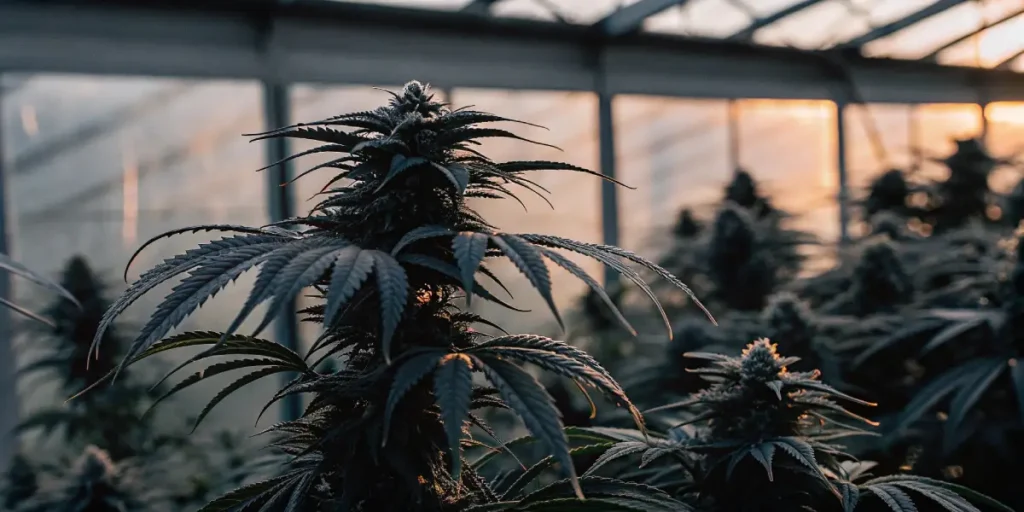
FAQs
How does environmental stress affect cannabis growth?
Environmental stress can stunt growth and reduce yields. Stress causes changes in hormone levels, which in turn affect the plant’s development. For instance, heat stress may slow down growth as plants focus on survival. Proper management of environmental stress in cannabis is crucial for maintaining healthy growth.
Choosing the right strain can mitigate some stress effects. Strains like Gorilla Glue and Bruce Banner are known for handling stress well. By selecting resilient strains and optimizing growing conditions, you can minimize the impact of stress on growth.
Environmental stress also affects the plant’s ability to produce cannabinoids and terpenes, which are crucial for its medicinal and recreational value. By knowing and managing environmental stress and hormone regulation in cannabis, growers can enhance both plant health and product quality.
Regular monitoring and adjustments in growing conditions, combined with strategic strain selection, can significantly reduce the negative effects of environmental stress, ensuring a more robust and productive cannabis yield.
What are the common signs of stress in cannabis plants?
Common stress signs include yellowing leaves, wilting, and stunted growth. Leaf drop or curling can also indicate stress. These symptoms suggest that the plant is struggling to adapt to its environment. Monitoring these signs can help you intervene before stress causes irreparable damage.
If you notice these signs, assess your growing conditions. Check for temperature fluctuations, humidity levels, and pest infestations. Adjust as needed to create a more favorable environment for your plants.
Other signs of stress may include abnormal growth patterns, discoloration, and reduced flowering. These indicators can point to underlying issues with environmental stress effects on cannabis hormone regulation, requiring prompt attention to mitigate damage.
Knowing these signs helps growers take timely action, adjusting environmental factors influencing cannabis hormonal response to restore balance and promote healthy growth in their plants.
Which cannabis strains are best for stress resilience?
Strains like Black Domina, Do-Si-Dos, and Bruce Banner 3 are known for their resilience. These strains have genetics that help them withstand stress better than others. Black Domina, for instance, is particularly hardy and can adapt to various conditions.
Choosing the right strain is a proactive step in stress management. It’s important to consider your local climate and potential stress factors when selecting a strain. Blimburn Seeds offers a variety of resilient strains to suit different growing environments.
Additional resilient strains include Northern Lights and Durban Poison, known for their robust genetics and adaptability to stress. Selecting such strains can enhance cannabis stress adaptation and hormone changes, ensuring healthier plants and higher yields.
By integrating resilient strains into their cultivation practices, growers can effectively manage environmental stress and hormone regulation in cannabis, leading to improved plant performance and productivity.
How can growers minimize environmental stress?
Growers can minimize stress by maintaining optimal growing conditions. This includes monitoring temperature, humidity, and light levels. Regularly check and adjust these factors to match the plant’s needs. Proper watering and nutrient management are also crucial.
Implementing a pest management plan can prevent infestations that cause stress. Regular inspection and treatment can keep pests at bay. Additionally, using tools like fans and heaters helps stabilize the growing environment, reducing stress on your plants.
Growers can also employ stress-reducing techniques such as mulching to retain soil moisture and using shade cloths to protect plants from excessive sunlight. These practices support environmental stress and hormone regulation in cannabis by maintaining a more stable environment.
Engaging in consistent monitoring and adjustments based on environmental factors influencing cannabis hormonal response helps maintain plant health and resilience, mitigating the impact of stress and ensuring optimal growth conditions.
What role does hormone regulation play in cannabis stress adaptation?
Hormone regulation is central to how cannabis plants adapt to stress. Hormones like abscisic acid, ethylene, and salicylic acid help the plant respond to environmental challenges. These hormones trigger changes that aid in survival, such as closing stomata to conserve water.
Knowing hormone regulation helps growers create better environments for their plants. By recognizing how hormones affect stress responses, growers can make informed decisions on strain selection and environmental management. This knowledge leads to healthier plants and higher yields.
Hormone regulation also influences how cannabis plants allocate resources during stress, prioritizing survival over growth. This adaptation is crucial for maintaining plant viability and productivity under adverse conditions, highlighting the importance of cannabis hormone regulation under environmental stress.
By mastering the dynamics of cannabis stress adaptation and hormone changes, growers can optimize cultivation practices, ensuring robust, resilient plants capable of thriving despite environmental challenges.

